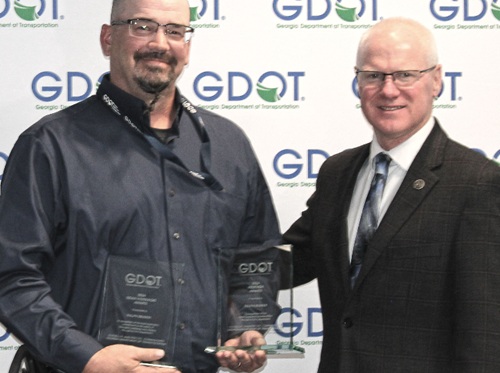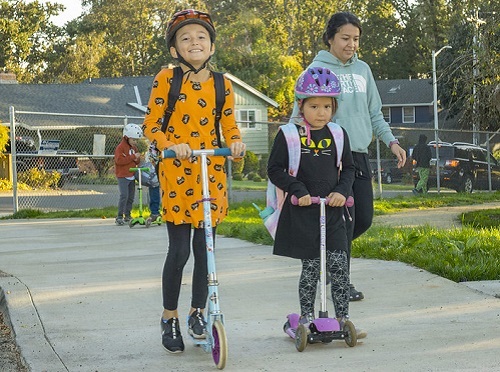The Oregon Department of Transportation recently distributed $1.4 million in grants to 14 school districts and community groups to get more children to safely walk and bike to school.
[Above photo by Oregon DOT]
The roots of agency’s Safe Routes to School or SRTS program are in the former Federal Highway Administration program of the same name. When FHWA shut down the program in 2012, Oregon DOT decided to convert it to a state program through a combination of discretionary federal funds and dedicated state money.

Part of the program is for infrastructure improvements – designing and building sidewalks, crosswalks, and pedestrian and bicycle paths. The program also funds an educational and outreach component to raise awareness of and promote safe walking and biking to school, which are what the latest grants cover, said Heidi Manlove, Oregon DOT’s SRTS program manager.
Many of the 14 competitive grants will pay for coordinators who work with students, parents, school officials, and other community partners to find active transportation solutions to get students to and from school.
“The coordinators’ jobs are tough,” Manlove said. “There’s a lot of time spent knocking on doors, trying to get people to come together on this stuff. Some of it is fielding transportation issues and doing a walkability trip, or checklist, and seeing what some of the barriers are around the school.”
Coordinators look at entry and exit points and times for car pools and buses, alternative paths around the schools that could be used for walking or biking, and strategies that make the best use of infrastructure.
Sometimes, Oregon DOT must convince school districts or municipalities that there’s more to promoting a safe way to walk or bike to school than building a sidewalk or installing a flashing beacon, Manlove said.

“People want sidewalks, crosswalks, speed bumps, and oftentimes, we have to sell them on the education piece because they’re so focused on the ‘build-it-and-they-will-come’ approach,” Manlove said. “The coordinator is that liaison who bridges the gap to have those conversations.”
One strategy coordinators use is to create a “walking school bus,” a group of students who walk together and “pick up” more students along the way. At least one adult, or “driver,” leads the group.
Several other state departments of transportation, including Florida, Alaska, Indiana, and Massachusetts, also promote walking school buses in their SRTS plans.
While many schools express interest in the SRTS program, it isn’t a given that they are implemented everywhere. But once a school or school district starts the program, they quickly buy into it, she said.
Some of the groups Oregon DOT has funded in the past “now have managed to get funding in the school district budget,” Manlove said. Schools in the 38,000-student Beaverton School District program, for example, have embraced the SRTS program, “and the schools now are “doing (active transportation) education pieces during P.E. [physical education] class,” she said. “Even if those students aren’t walking or biking to school, they’re learning bike safety and pedestrian safety in P.E.”
 States
States
Georgia DOT Foreman Receives Two Heroism Awards
January 2, 2026 States
States

